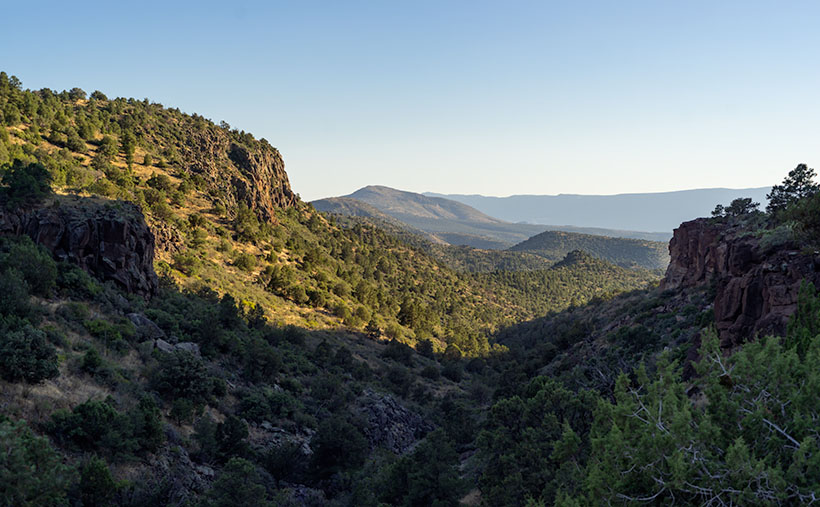Just thinking about road construction gives me a headache. I’ve had too many bad experiences traveling across the country. Don’t get me wrong; I know that roads need maintenance. Besides, I love driving on fresh pavement. It’s just that I’ve frequently gone across Arizona, New Mexico, and Texas in construction zones 10 or 20 miles long without any working crews. Inevitably, I’m stuck behind a Walter Mitty who’s afraid to drive over 25 when there are orange pylons on the road, and a close-up view of a Peterbilt 379 grill looming in my rearview mirror.
So, it’s hard for me to imagine a crew building a road—or in the case of General Crook, a trail—through pristine wilderness. It took them two summers to complete. During the first year, C.E. Cooley, Henry Dodd, and some troops from Fort Apache laid out the route to Fort Whipple. As a side note, this was the legendary trip where an Arizona town got its name. While camping in a White Mountain meadow, the men played a game of cards (I guess they couldn’t pick up a Wi-Fi connection for their iPhones), with the loser having to clean the evening’s dishes. The camp is now the town of Show Low, Arizona.
The second summer, a cadre of troops protected a construction team as they spent several months building a road wide enough to get wagons through. Imagine having to move rocks, clear downed logs, and building grades without a bulldozer. And even with all that hard work, their Yelp reviews sucked.
With each mile of progress complete, the construction crew left a marker, either carved into a tree or stone. Some of those markers are still there. The easiest to find is Mile 13 because the State has installed a historic plaque and turn-out on the south side. At mile 13, the road begins its ascent from the Verde Valley up the Mogollon Rim. It is east of the Fossil Creek road beside a large butte called 13 Mile Rock Butte.

This spot is where we stopped to take this week’s featured image. And I have to say that the view from there is pretty good. From above the Sycamore Canyon Ravine (5,000 ft elevation), you can see back down into the Verde River Valley. In the middle distance is about where the Fossil Creek Recreation Area is. Along the distant horizon is the Black Hills, which marks the Verde Valley’s south wall. Behind the knoll in the frame’s center, the Verde River turns south and becomes a designated Wild River from there until it empties into Horseshoe Lake near Carefree.
You can see a larger version of 13 Mile on its Web Page by clicking here. Be sure to come back next week and see where we stopped after reaching the top of the Rim.
Until next time — jw
